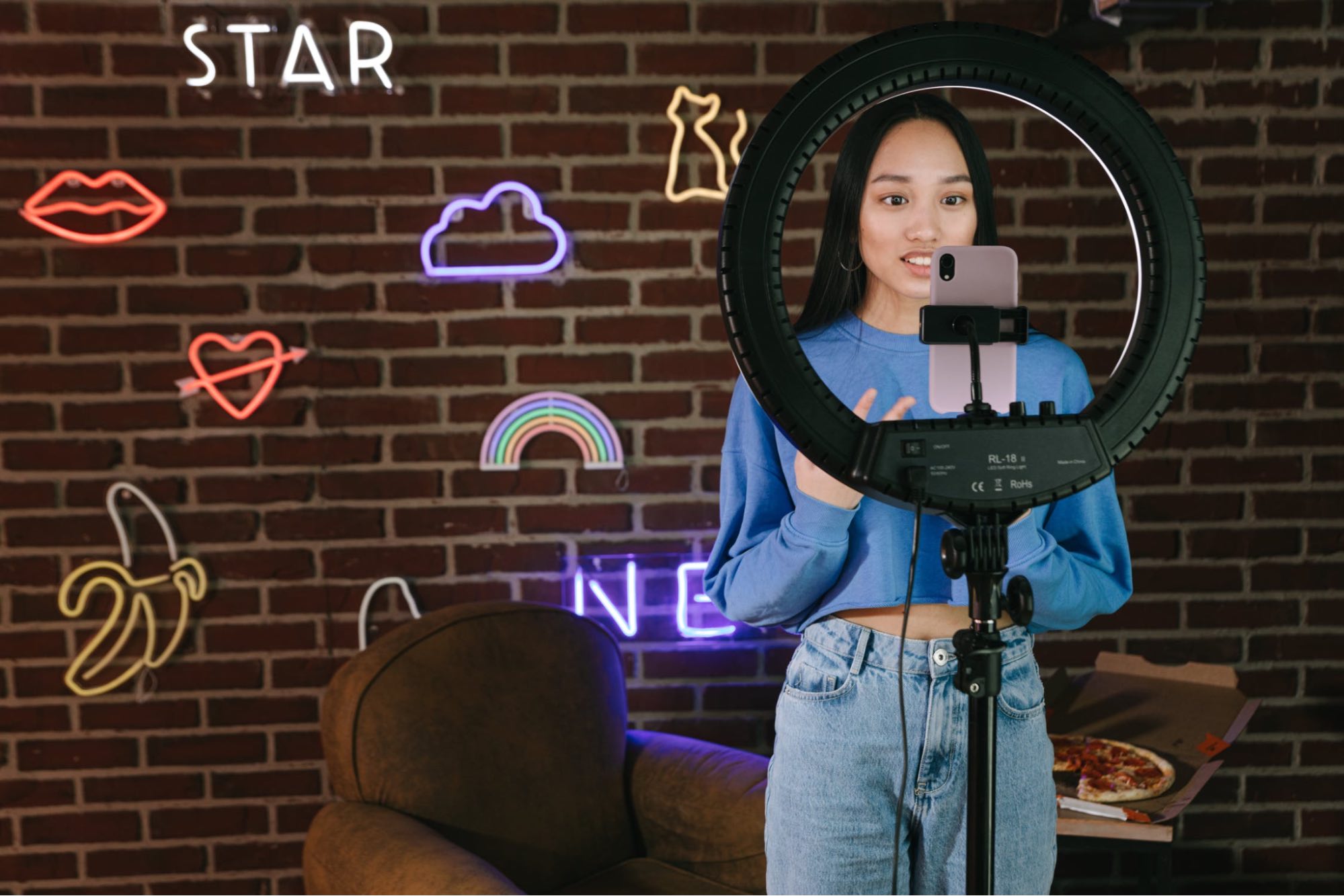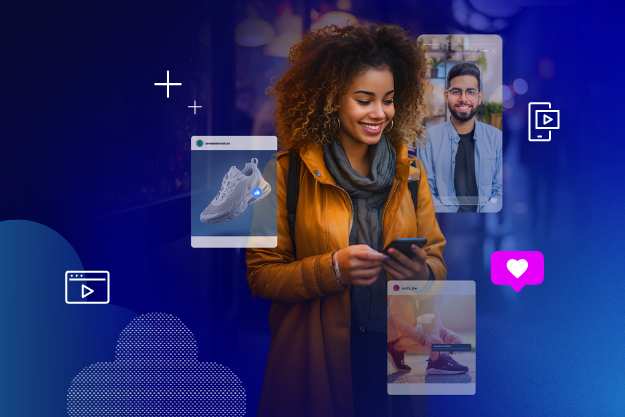The world of content creation has rapidly grown in recent years. There are more content professionals than ever before, and most are individual creators. There are over 50 million content creators in the world, with 2 million of them able to pursue it as a full-time career. Although only 4% of that population reaches six-digit earnings, many of them generate some level of augmented income through their content. Moreover, the rate at which people consume content from individual content creators also continues to rise. Platforms like YouTube, Facebook, TikTok, and Instagram have been on an uptrend for the past decade and show no signs of slowing down.
What is the creator economy?
The creator economy is on the rise, but what is the creator economy to begin with, and who is part of it? The creator economy is simply the overall market of content creation in video, visual, writing, and voice-based content. The creator economy is prevalent mostly on platforms like YouTube and Facebook, where people can earn from views and traffic on top of other additional ways they can cash in on their influence and following.
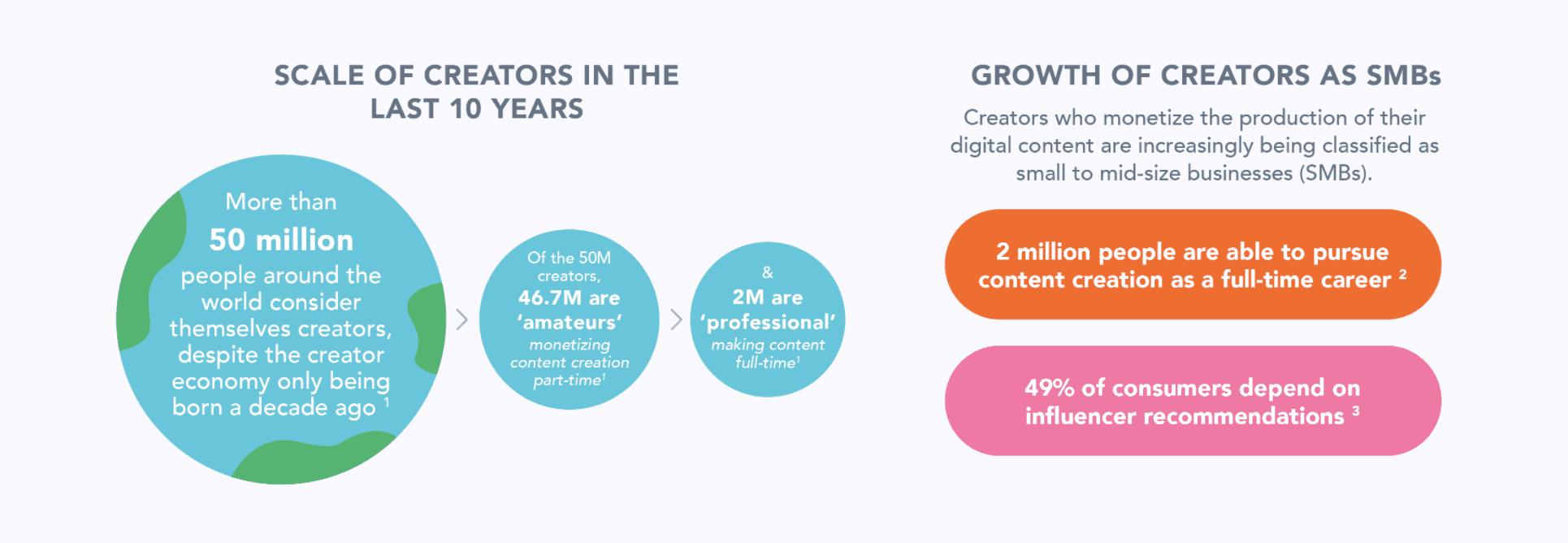
While “influencers” are more closely associated with growing their following and partnering with brands for monetary gain, the term “creator” includes a broader group of individuals who may produce content just for the art itself, in addition to all types of influencers.
Most creators have multiple channels and constantly build on rising platforms as they come up. They earn through sponsored content, advertising, and sales on their own products and on affiliate deals with partner companies.
How the creator economy is affecting marketers
The creator economy doesn’t just affect content creators and consumers. It also affects marketers. Influencer marketing is becoming one of the most effective ways to market online, although there is still room to improve how marketers and companies can accurately measure the ROI on influencer spending. But putting money into third-party content definitely has many perks. It’s much cheaper compared to traditional tri-media and has a more targeted reach (especially when it comes to micro-influencers). It helps build awareness, trust, and convert followers into buyers when the right strategy is put in place. So marketers should definitely be in the loop regarding the creator economy and know which creators to tap within their respective industries.
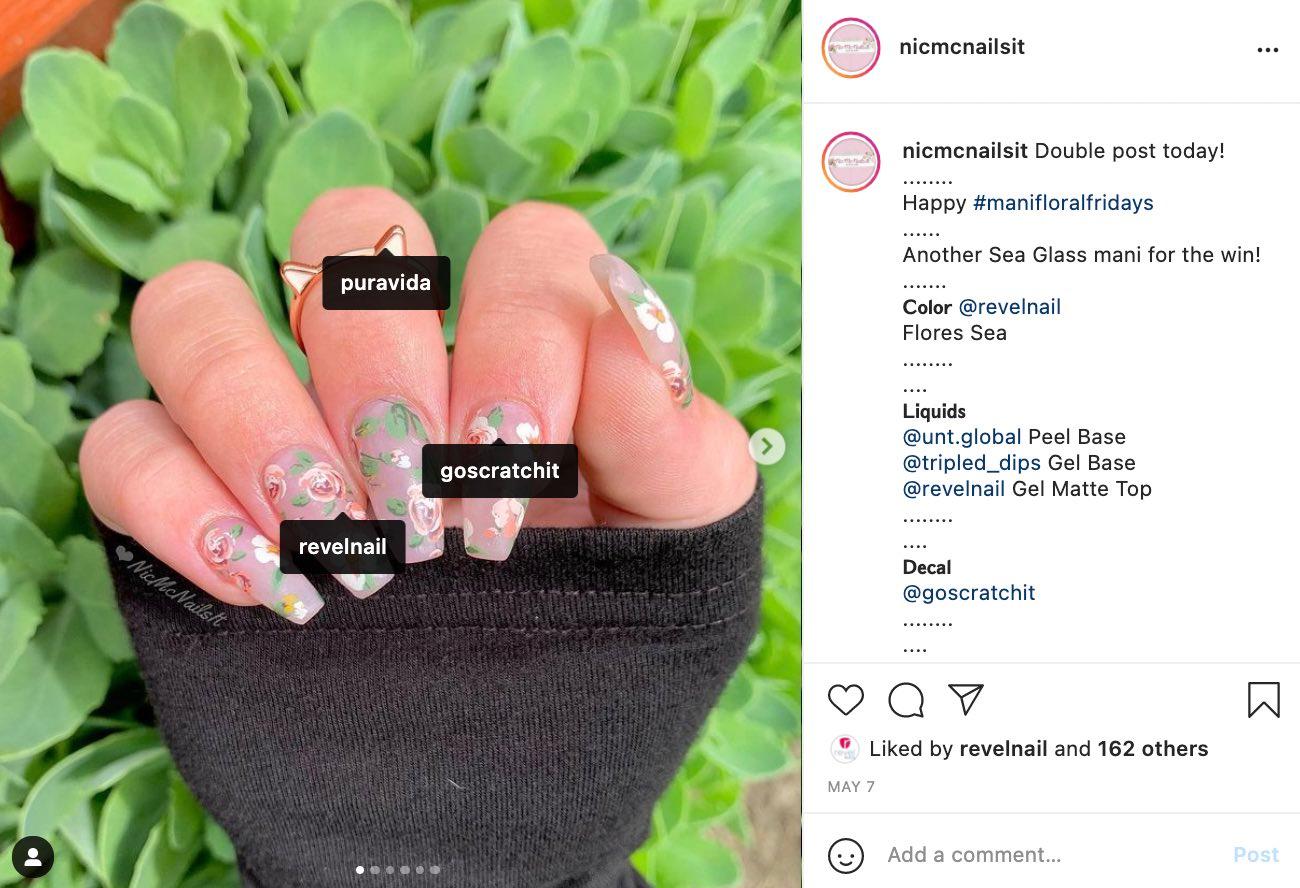
Instagram user and micro-influencer Nicole McArthur (@nicmcnailsit) considers herself a self-taught artist rather than a professional, and uses her profile to share nail looks and products like Revel Nail's polish.
Where the creator economy is going
To say that the creator economy is huge would be an understatement, but we haven’t seen the peak of the industry yet and might not see it for a while as the digital revolution continues to evolve. Disruptions come up on a daily basis and the landscape is always changing. Here are a few trends that marketers should keep an eye on.
1. Education and entertainment still rule the pack
One of the biggest creator economy trends for the past few years is an emphasis on education and entertaining content. People like consuming content that allows them to learn or laugh. And so, marketers should find creators that not only match their industry and brand values, but also have a certain level of expertise in the field and can provide value to your target audience. When designing a campaign with a creator, try to focus on crafting content that not only promotes your brand but gives educational and entertainment value to people too.
2. The growth of affiliate marketing
Tracking sales from influencer marketing can be tough. Influencer marketing is great for building awareness as it gets eyeballs on a brand, but doesn’t always translate to a lot of sales. One way that companies have tried to incentivize content creators to sell their products is by creating an affiliate marketing program. Many companies start affiliate programs, especially those in the digital product and SaaS market.
One solution for influencer discovery and management, as well as ambassador marketing strategy, is an automated CRM platform like an influencer marketing solution. When you build out your partnership campaigns over time, it can be helpful to have one software to manage those relationships.

Yogi and influencer @omniyogagirl partners with apparel brand KiraGrace, posing in their gear and offering a unique affiliate discount code to her followers.
3. Voice-centric content is on the rise
While video still trumps all forms of content because it can show movement, there has also been a steady increase in voice-centric content as well. Podcast listenership has grown by 29.5% in the last 3 years and will continue to grow. Voice gives people more flexibility to multitask as they consume content. They can drive, exercise, or even work in some cases while also consuming pure audio content. There has also been a rise in voice platforms like Apple Podcasts, Google Podcasts, Spotify, Twitter Spaces, and Clubhouse, to name a few.
4. Building trust is key
When looking for influencers to work with, marketers should always look first to brands and individuals that have built a level of trust with their audience. There are a lot of vanity numbers in social media, which can often be quite deceiving. Some things that help determine whether a content creator has long-term trust with his or her audience is checking whether the creator has received verified status on social media, or analyzing their engagement rate per post.
Also, look for content creators who have mastered the art of reducing bounce rates and focus on quality listens and views and have longer watch times than most. These criteria help marketers determine whether they’re really getting engagement on influencer contracts and not just shallow visibility.
5. Monetizing strategies are varied
Content creators are making money in various ways now. We already discussed sponsorships and affiliate marketing, but there are other ways, too, such as making money through e-commerce, dropshipping, and direct advertising. Some creators prefer to earn by sharing their expert knowledge and make money by selling online courses. The creator economy market map is also quickly expanding as influencers and content creators start tapping into more niche markets. For instance, there are some creators that might focus on entry-level gadgets while others might focus on higher-tier products. The gamers’ community also is another great example as some might reach a bigger reach with popular games like PUBG and Mobile Legends, and some might narrow their focus down by talking about novelty games on old-school consoles. Spend time researching what scale of influencer is right for your brand.
6. The future looks bright
In 2019, over a third of children aspired to be YouTubers when they start working. Some are starting that journey early as there has also been a rise in online child influencers and stars. What that tells us is that the future of the creator economy looks bright as we will still see an uptick in content creators.
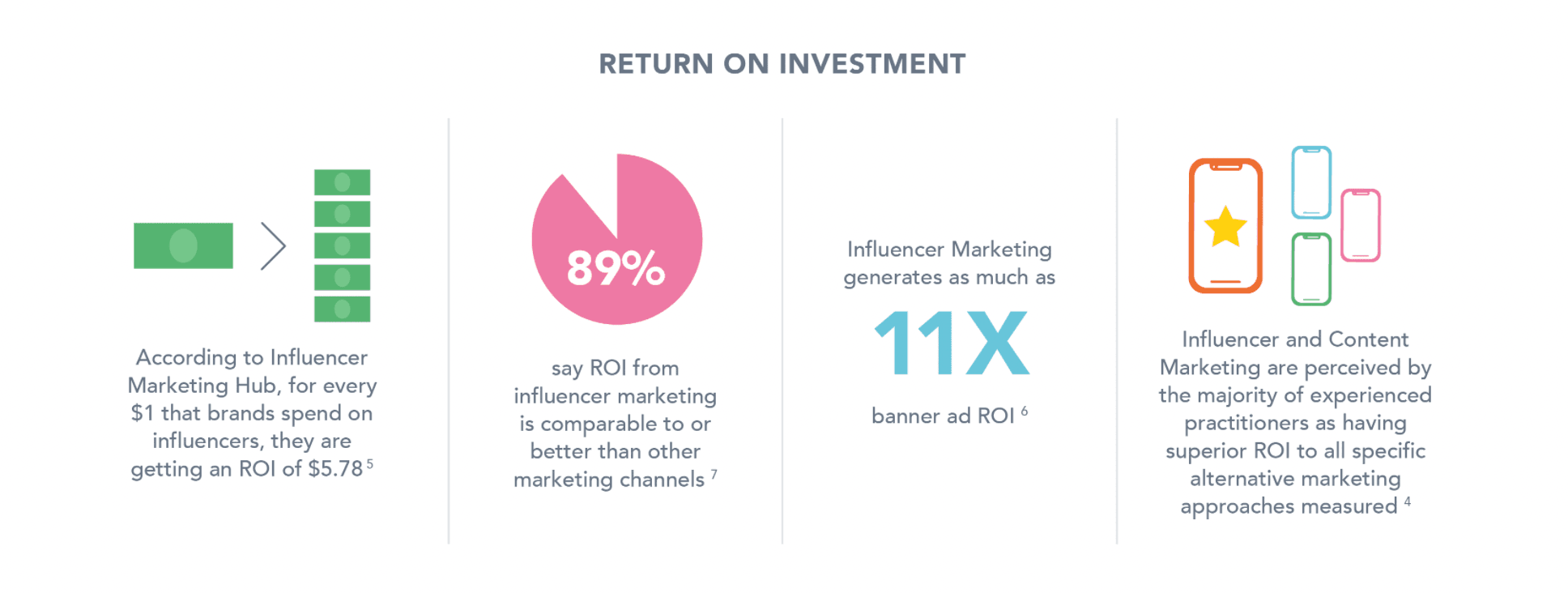
Content creators with a communications degree have shown to have a lot of success in their field, so it's still one of the most desired college courses for people looking to become professional bloggers, vloggers, or influencers.
7. Digital content will continue to rise
The creator economy growth is obviously still on an uptrend. This is because there is an increase not just in the supply of content, but also in the available platforms to publish content and the available audience. People are spending more and more time on the internet, and the market will continue to rise as that shift continues to happen. So it’s not too late for marketers who aren’t leveraging influencer marketing yet to get into the game. Influencers will be here for quite a while and they will continue to provide results and value to brands.
Marketing in a content-driven world
Content is quickly becoming the new currency as individual creators continue trumping the attention-grabbing game. Brands should focus on three main areas when it comes to content marketing: user-generated content, branded content (created in-house), and influencer or ambassador partnerships. With these three tools in your marketing arsenal, expect to see your brand influence grow.
Editor's Note: This article was originally published on pixlee.com. Any statistics or statements included in this article were current at the time of original publication.













